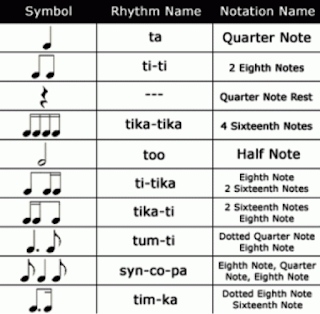The Modal or Chest Voice Register
The
modal or chest voice is the NATURAL register for speaking and singing, and the
vast majority of both are done in this register. Women sometimes speak up into
their Head voice as well but most daily speech activity still centers on the
Modal or Chest Register. This means that
whenever you talk on the phone or to another person, you are most probably
using your Modal or Chest Register. This
is one of the reasons why your Modal or Chest Register is more developed than
other registers of your voice; you use it pretty constantly already. As you sing higher and higher pitches, your
Vocal Folds get longer, they become tenser, and they become thinner along their
edges. After you’ve worked consistently
with a professional vocal coach and practiced regularly on your own (THIS is of
tantamount importance), you should be able to phonate two octaves or more in
Modal or Chest Register alone.
To
achieve success with this register in particular, it is necessary to learn to
be sensitive to and learn to make minor adjustments in your Larynx as your
voice ascends. If you don’t, the Larynx
will adjust itself as it needs to but the result will be static, jerky
adjustments that sound like vocal breaks and cracks in the voice. Many of my students know that I talk about a
Manual Shift (Stick Shift) car. When you
learn to drive a Manual Transmission, this means you have to do the shifting;
an Automatic Transmission does the “shifting” for you. You learn to watch your Odometer, to hear the
sound of the engine as it’s revving, and eventually, to begin to “feel” when
it’s time to change to the next gear.
This is how familiar you need to be with your voice. You must also be HONEST with yourself and
patient. What I mean by this is that you
need to be extremely familiar with your own voice; what it will and won’t do;
where you feel “pressure” or struggle or it begins to feel “too high”; where you
feel most comfortable and when you feel less comfortable. These issues are not “problems”; they are
simply the nuances of your voice that you need to, first, become aware of, and
then, begin to work with in order to create ONE fluid, consistent voice, as opposed
to a separate Chest voice and Head voice.
This requires a LOT of practice and hard work but it can be achieved.
The
color and timbre of the Chest or Modal voice is darker and warmer than the Head
or Falsetto tones. The overall sound
tends to be fatter and richer than those produced on higher vocal pitches. Every layer of the Vocal Folds is employed to
create the Chest or Modal voice sound.
As with any area of the voice, strong breath support will help to power
a strong Chest or Modal Register.
Usually,
between the Modal or Chest Register, and the Head Voice, there is a
transitional area where you have a “break” (this occurs when you force your
voice to continue in the Chest or Modal Register beyond the point where you
should have transitioned to your Head Voice or Falsetto Register). Check out Blog Post #75 to learn about
working in this Passaggio. The next blog
post will be on the Falsetto Register and/or the Head Voice, and the
differences between those two registers.
Thanks
so much for reading! Read the following
posts on Head Voice and Whistle Register.
As always, please send me any questions, comments, and/or future blog
post suggestions. If you have questions
about my lessons or me, check out my website at www.SingitForward.net. Sing it Forward!


Comments
Post a Comment